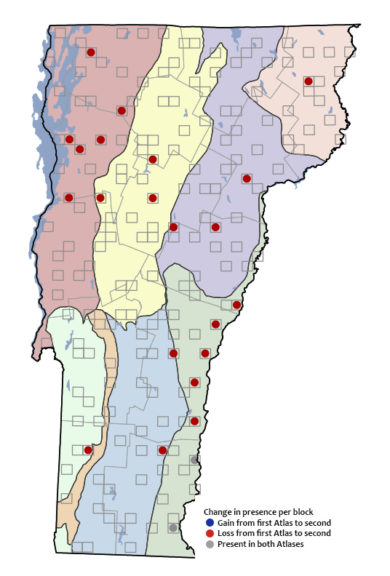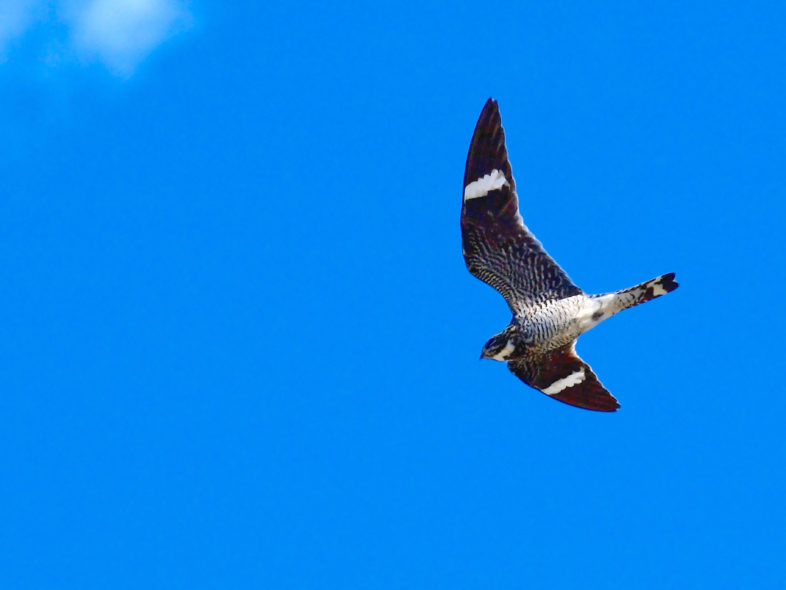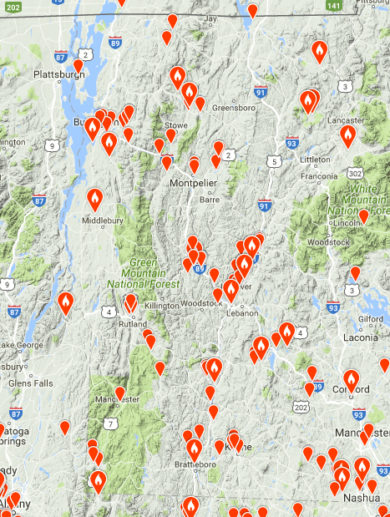On warm summer evenings in the breeding season in Vermont, Common Nighthawks once roamed the skies over treetops, and towns. Their sharp, electric peent call was the first clue that they were overhead. At dusk, these long-winged birds flew in graceful loops, flashing white patches out past the bend of each wing as they chase insects. Those days are mostly gone now, but in August during migration, the careful observer can still witness their spectacular flight here in Vermont as they whirl southward on their autumn migration.
Although most often seen migrating at dusk here in Vermont, Common Nighthawks migrate at all hours of the day, often in large flocks, on one of the longest migration routes of any North American landbird. Many travel overland through Mexico and southward through Central America, while others pass through Florida and across to Cuba southward, flying over the water to reach their wintering grounds in South America thousands of miles away.

The Vermont Breeding Bird Atlas found that Common Nighthawks declined by 91% (23 to 2 survey blocks). Losses occurred in every biophysical region.
In the United States where most of them breed, Common Nighthawk populations have declined by over 60% in the last 50 years according to the North American Breeding Bird Survey. In Canada they have declined by more than half. The Vermont Breeding Bird Atlas, a project of the Vermont Atlas of Life, found massive declines between the first atlas in the late 1970s compared to the recent atlas finished in 2007.
No one really knows why they are declining, but some of the threats to their populations likely include loss of preferred nesting areas, especially gravel on flat-roofed buildings; loss of upland openings due to succession, urban/suburban development; increased predation (crows, feral cats); pesticide use especially for mosquitoes; vehicle collision while roosting on gravel roads, and maybe other factors.
Watch the Migration and Help Monitor Them
Get outside at dusk right now and watch for them migrating, especially along river valleys. With their long, pointed wings and bright white patches, they are relatively easy to identify. Keep track of how long you watch and an exact count of the numbers you see and add them to Vermont eBird, a project of the Vermont Atlas of Life, and help us track their populations and migration.
Locations of Common Nighthawks reported to Vermont eBird this month. Click on the map to visit Vermont eBird and explore the map.



I had on one my fence in Williston, Vermont. When resting, it tucked up so tight, I thought it was a large toad. 🙂 He was sighted on Sept. 10, 2019
Just had one in Cabot VT. 8/29/22 Spent 14 min in fields. Beautiful bird to watch. Not sure but think it was a cream band (female)
Have seen many swooping above the fields from Brownsville to Windsor this evening. Have never seen so many and along such a wide stretch at once.
Just saw 3 fly by my house! So cool! Rutland area.
I observed 16 in aflock last nite at 6:30pm flying west in gansevoort ny.
Witnessed upwards of 60 nighthawks (perhaps more, perhaps less) off Peavine in Bethel, VT. We saw the same size group last year (2024) as well.